Have you ever sat down to start a new design project only to stare at a blank screen for hours? You're not alone.
We’ve all been there. At one point, we all stared at a blank screen, the cursor practically laughing at us. Creative blocks can wreck deadlines, upset clients, and make you doubt yourself.
The thing is, though, creative blocks aren't a sign of failure or lack of talent. They're a natural part of every designer's creative process, from novices to industry veterans.
Paul Rand, one of the most influential graphic designers of the 20th century, once said, "The problem of the artist is to defamiliarize the ordinary." Sometimes, that process of defamiliarization gets stuck, and that's perfectly normal.
In this article, we'll explore seven distinct types of creative block that graphic designers commonly face. More importantly, we'll explore practical strategies for overcoming a creative block, drawing from insights from leading design professionals.
Whether you're creating logo designs, brand identities, or marketing materials, you'll find actionable techniques to rekindle your creativity.
Understanding Creative Block
Before diving into specific types of creative blocks, we must understand what we're dealing with. Creative block in graphic design isn't simply running out of ideas—it's a complex psychological and professional challenge that can manifest in various ways.
Stefan Sagmeister, renowned graphic designer and typographer, describes the creative block as "the gap between what you want to achieve and what you're currently capable of producing." This gap can feel overwhelming, leading to a temporary inability to generate new ideas or execute existing ones effectively.
The causes are as varied as the designers who experience them. Tight deadlines, client pressure, personal stress, or even success itself can trigger a creative block.
The impact on productivity can be significant. A creative block can turn what should be a six-hour project into a multi-day struggle, affecting not just the current project but creating a ripple effect across your entire workflow. Understanding these blocks is the first step toward overcoming them.
Type 1: Mental Block (When Your Brain Goes Blank)
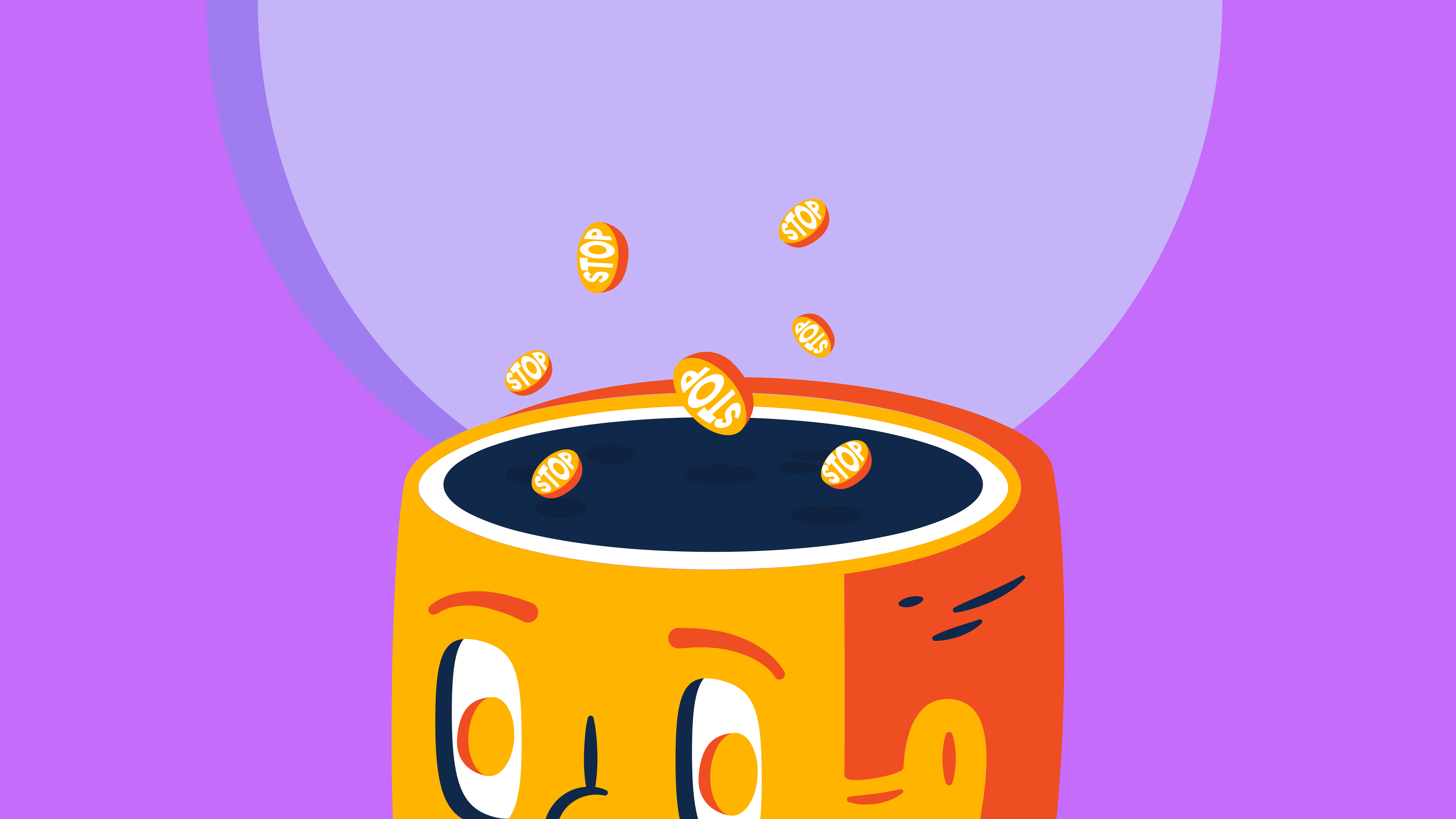
You know that feeling when you open your design software and suddenly forget everything you know about design principles? That's a mental block in action. It's as if your creative brain has decided to take an unscheduled vacation, leaving you with nothing but that intimidating blank canvas.
Mental blocks often stem from overthinking, information overload, or what designers call "analysis paralysis"—when you have so many possible directions, you can't choose any of them.
How to break through:
- Start with rapid sketching exercises—no computer required. Set a timer for 5 minutes and fill a page with rough logo concepts or layout ideas.
- Break your project into smaller, manageable chunks. Instead of tackling an entire brand identity immediately, focus on the color palette or typography first.
- Use the "fifteen-minute rule"—commit to working on the project for just fifteen minutes. Often, you'll find yourself in flow and continue naturally.
Quick tips:
- Create a design brief template and fill it out before starting any work
- Use mind mapping to organize your thoughts visually
- Take regular breaks every 90 minutes to prevent mental fatigue
- Practice quick sketching exercises daily
Design exercise: The grid method
Draw a 3x3 grid and create nine quick variations of the same design element in under 10 minutes. This constraint-based approach can help bypass overthinking and generate multiple ideas quickly.
Type 2: Emotional Block (When Self-Doubt Takes Over)
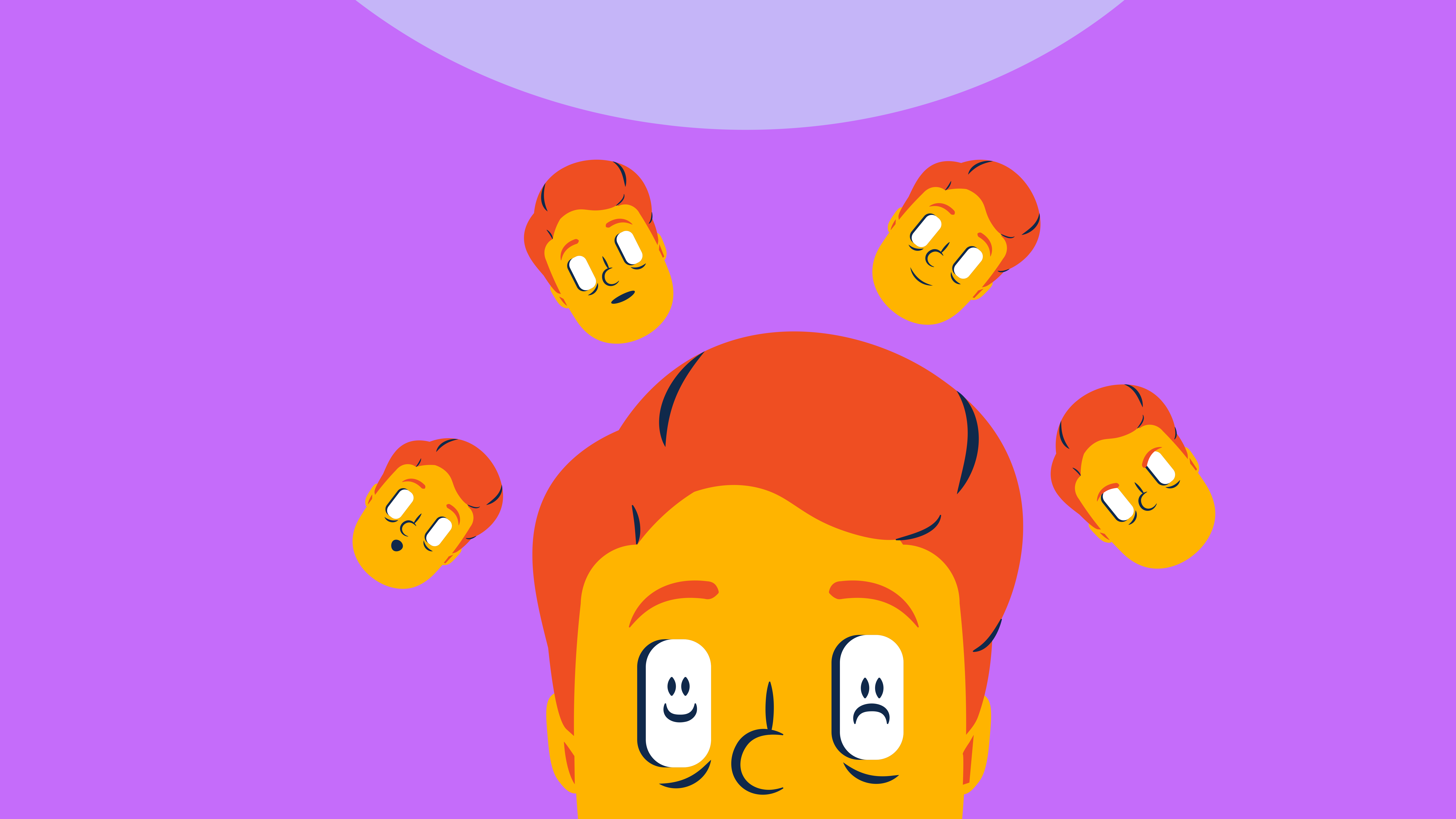
No designer is immune to self-doubt. Recognizing how imposter syndrome, fear of criticism, or perfectionism paralyzes progress is the first step to overcoming these emotional barriers. These feelings can be particularly intense when working on high-stakes projects or competing with other talented designers.
This creative block often stems from the fear of producing subpar work and can lead to procrastination or endlessly revising designs.
How to break through:
- Create a "wins folder" filled with positive client feedback and successful projects
- Share work-in-progress with trusted peers for advice
- Remember that you can refine every design—focus on progress over perfection
Quick tips:
- Start each day by reviewing your best work
- Set realistic milestones for each project phase
- Practice giving and receiving constructive criticism
- Keep a design journal to track your growth
Design exercise: The iteration game
Take one of your old designs and create three new versions in different styles. This exercise helps prove to yourself that there's always room for growth and multiple solutions to any design challenge.
Type 3: Environmental Block (When Your Space Stifles Creativity)
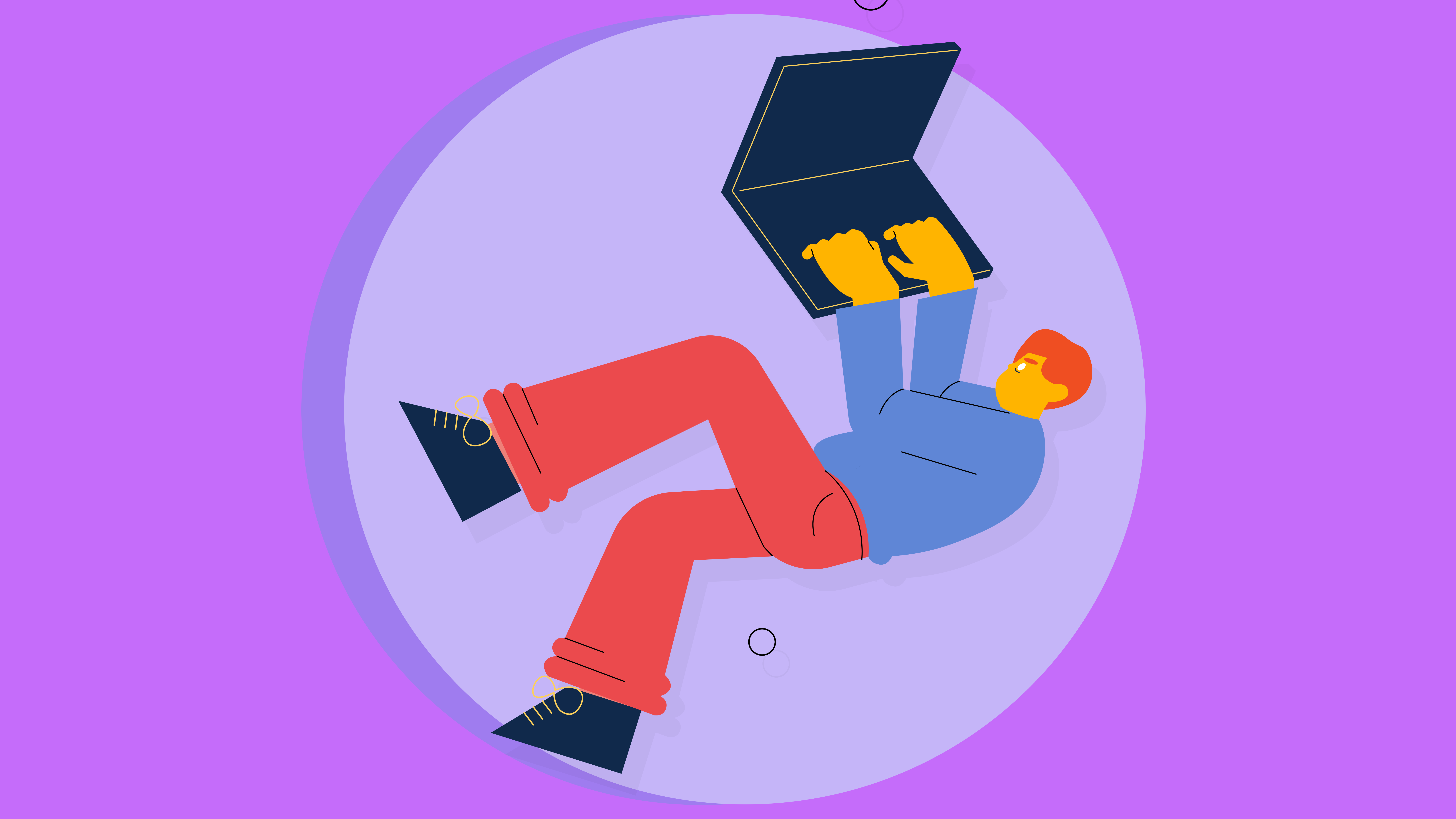
Every designer knows the feeling of being unable to focus because their workspace doesn't feel right. Seasoned designers will point out that your environment directly impacts your creative output—that sometimes, a simple change of scene can lead to breakthrough ideas.
Environmental blocks aren't just about physical clutter (though that's certainly part of it). They can include digital clutter, poor lighting, uncomfortable seating, or even the wrong ambient noise level. When your space works against you, every creative decision becomes more difficult.
How to break through:
- Create a dedicated design space, even if it's just a corner of a room
- Organize your digital files into a clear, logical system
- Curate a collection of inspiring design books and materials within arm's reach
- Ensure proper lighting and ergonomic setup for your workstation
Quick tips:
- Clean your desk and organize your files at the end of your workweek
- Create separate user profiles for work and personal computing
- Use noise-canceling headphones when needed
- Keep a small sketchbook and pencils within reach
- Rotate inspiring artwork in your workspace monthly
Design exercise: The space audit
Spend 30 minutes analyzing your workspace. Create a simple mood board for your ideal creative environment, then implement one improvement each week.
Type 4: Inspiration Block (When Ideas Won't Flow)

"Good design begins with honesty, asks tough questions, comes from collaboration and from trusting your intuition," says famous industrial designer Freeman Thomas.
But what happens when your intuition seems to have gone quiet? Inspiration blocks can make even experienced designers feel creatively empty.
These creative blocks often occur when you've been working on similar projects for too long or haven't taken time to refill your creative well. It's like trying to pour from an empty cup—you need to replenish your sources of inspiration regularly.
How to break through:
- Create a personal trend library organized by design category
- Participate in design contests to expose yourself to different briefs and styles
- Follow and engage with other designers' work
- Take regular "inspiration walks" with your camera to capture interesting visual elements
Quick tips:
- Subscribe to design magazines and newsletters
- Join online design communities
- Create monthly inspiration boards
- Take photographs of interesting patterns and textures
- Study designs from different decades and cultures
Design exercise: Style fusion
Choose two completely different design styles, such as minimalism and street art, and create a series of three designs that blend elements from both. This exercise forces you to think outside your usual aesthetic preferences.
Type 5: Communication Block (When You Can't Express Your Vision)
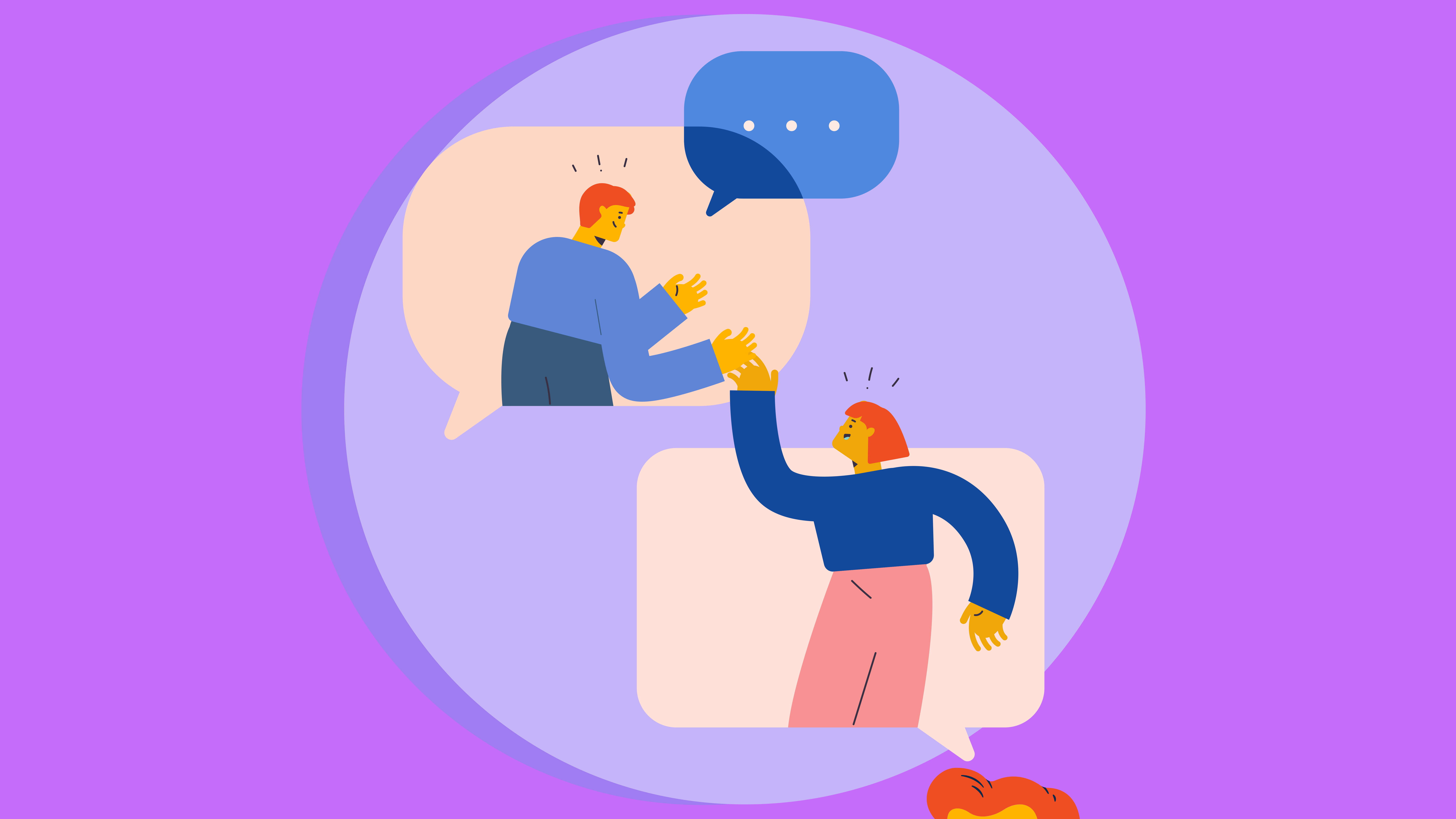
"Design is the intermediary between information and understanding,” says renowned American painter and art teacher Hans Hoffman. Communication blocks can occur when you struggle to articulate your design decisions or understand client requirements.
These creative blocks often lead to misaligned expectations and revision cycles that could have been avoided with more precise communication. They're particularly challenging when working on abstract concepts or explaining design choices to non-designers.
For example, designing an employee scheduling app involves balancing user-friendly interfaces with backend functionality, often requiring clear communication between designers, developers, and clients. Misunderstandings during this process can lead to costly revisions.
How to break through:
- Develop a clear design presentation template
- Create mood boards early in the project process
- Use analogies and references from everyday life to explain design concepts
- Document your design process to share with clients
Quick tips:
- Start client meetings with a brief design vocabulary primer
- Use screen recording to explain your design process. If you need to demonstrate your process or explain complex design feedback clearly, try using a free online screen recorder for Mac and Windows to capture concise walkthroughs.
- Keep a swipe file of successful project presentations
- Practice explaining your designs to non-designer friends
Design exercise: The translation game
Take a complex design concept and explain it three ways: once for a fellow designer, once for a business client, and once for someone with no design background. This helps develop flexible communication skills.
Type 6: Routine Block (When Familiarity Breeds Stagnation)
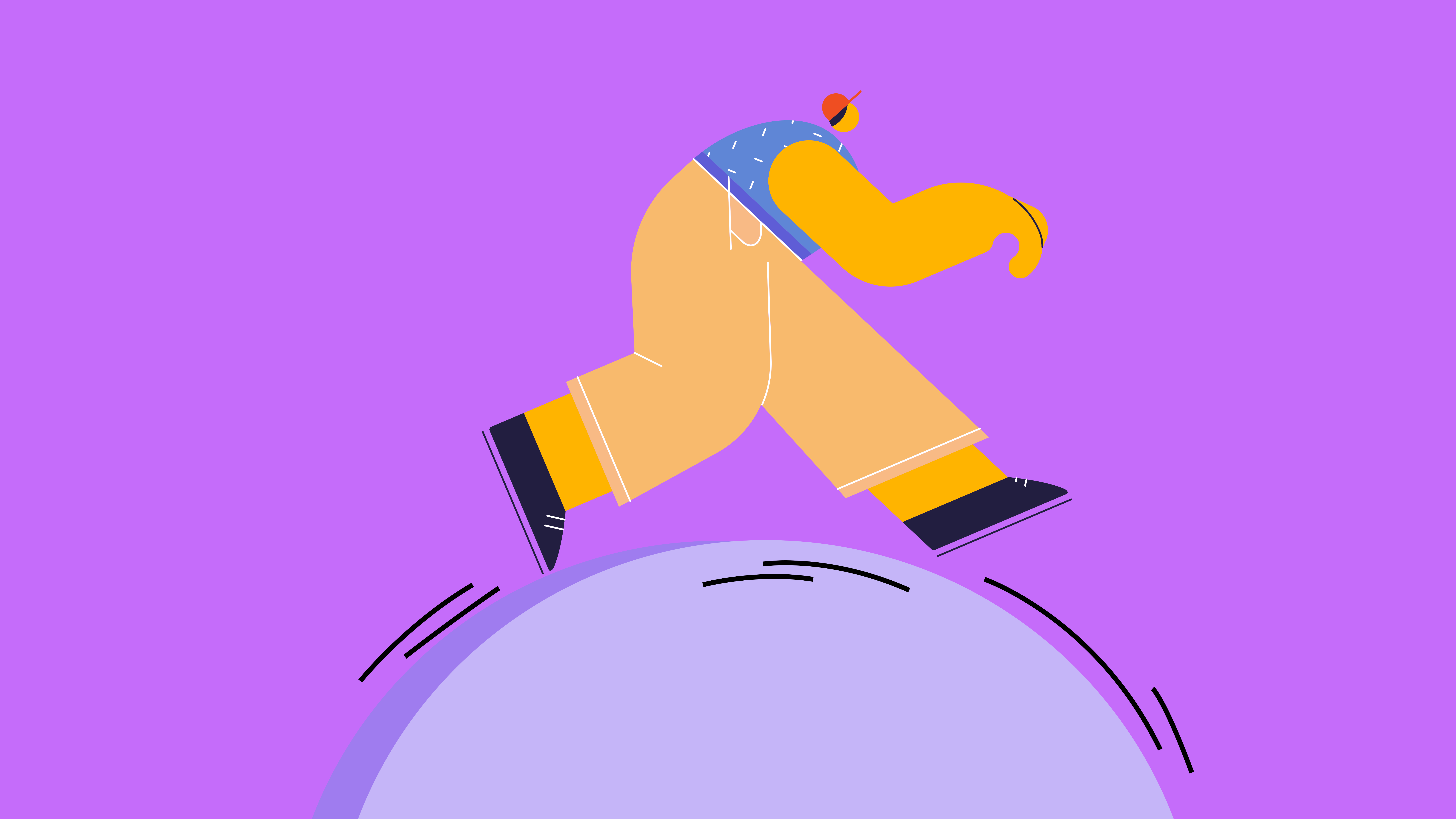
Milton Glaser once said, "The real issue is not talent as an independent element, but talent in relationship to will, desire, and persistence." Routine blocks occur when you're stuck in comfortable patterns, leading to predictable, uninspired work.
These blocks can be particularly sneaky because they don't feel like traditional creative blocks—you're still producing work, but they lack the spark of innovation. It's like being on creative autopilot.
How to break through:
- Take on projects outside your comfort zone
- Learn a new design skill or software feature each month
- Collaborate with designers from different disciplines
- Enter design contests in unfamiliar categories
Quick tips:
- Try working with a new color palette every week
- Switch up your go-to fonts regularly
- Experiment with different design styles
- Set personal design challenges
- Study design principles from other fields
Design exercise: The constraint challenge
Create three versions of the same design using different constraints: one using only typography, one using only shapes, and one using only lines. This forces you to break routine approaches.
Type 7: Overwhelm Block (When Everything Is Too Much)
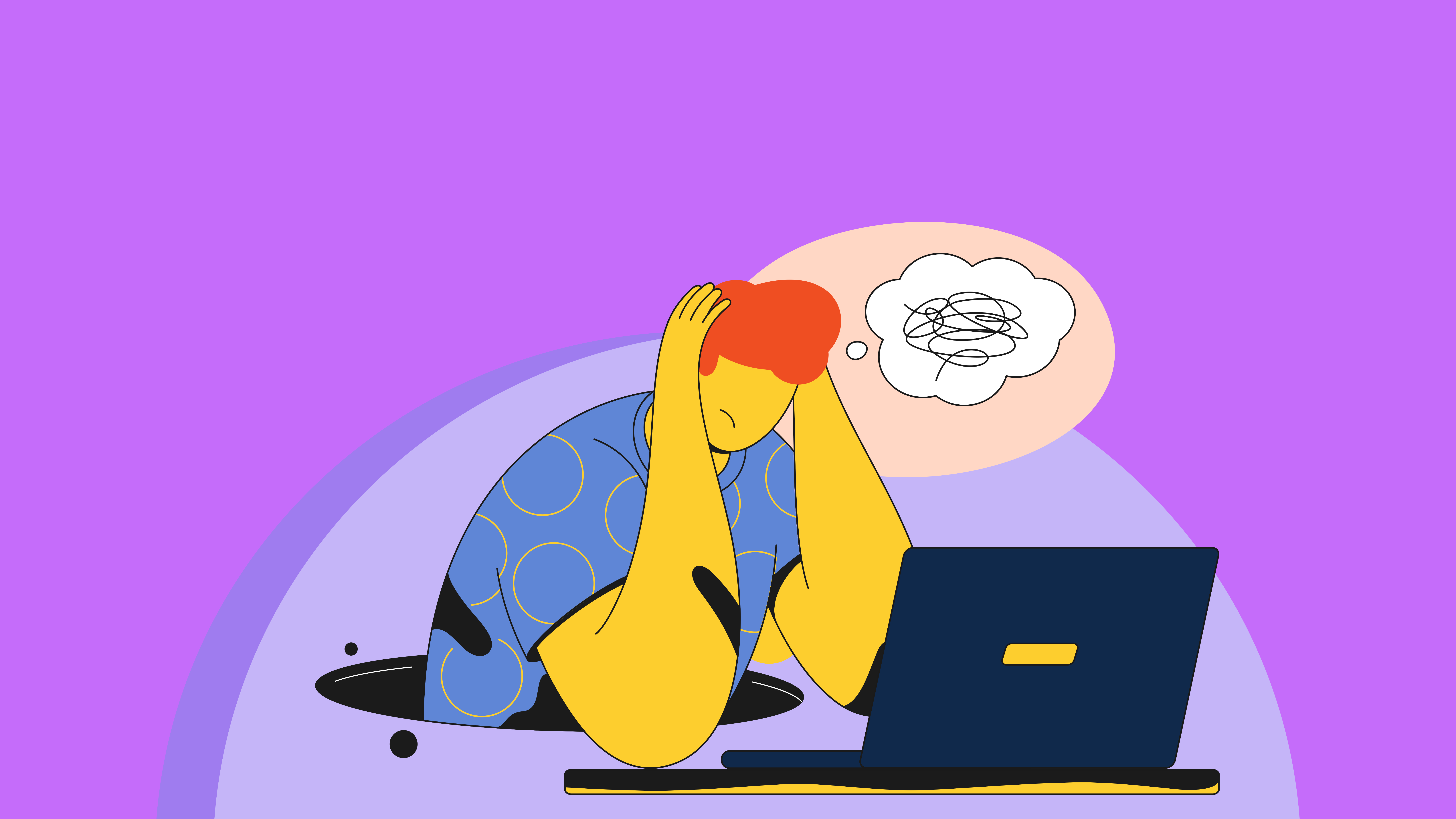
Design legend Massimo Vignelli noted that "The life of a designer is a life of fight against the ugliness." Sometimes, that fight becomes overwhelming, especially when juggling multiple projects, deadlines, and client expectations.
Overwhelming blocks happen when too many options, too many projects, or too many revisions paralyze you. It's like trying to juggle while walking a tightrope—eventually, something has to give.
How to break through:
- Create a project priority matrix
- Break large projects into smaller, manageable tasks
- Set specific time blocks for different types of work
- Use project management tools to visualize workload
Quick tips:
- Start each day with your most creative work
- Use time-blocking techniques
- Maintain a clean project folder structure
- Schedule regular breaks between intensive design sessions
- Keep a running list of quick wins
Design exercise: The focus funnel
Create a decision tree for your current project load. Map out all your tasks, then systematically eliminate or delegate non-essential items.
Tips for Preventing Creative Blocks
When it comes to creative blocks, prevention is often better than cure. Establishing good habits and practices within your daily schedule can help you maintain your creative flow and catch potential blocks before they become serious obstacles.
The key is to develop sustainable practices that work with your natural creative rhythms.
- Establish a regular creative practice, even when not working on client projects
- Build a supportive network of fellow designers
- Participate regularly in design contests to stay sharp and inspired
- Keep actively learning and exploring new design techniques
- Document your process and learnings from each project
Conclusion
Creative blocks are not the enemy—they're opportunities for growth and innovation in disguise. As we've explored, each type of block requires a different approach, but you can overcome them with the right strategies and mindset.
Remember, every designer faces these challenges. What sets successful designers apart is not the absence of creative blocks but their ability to work through them systematically and learn from the experience.
Keep these strategies in your toolkit, stay connected with the design community, and remember that sometimes, the best way to overcome a block is to embrace it as part of your creative journey. Your next great design breakthrough might be just on the other side of your current block.
Now that you're equipped with these “block-busting” strategies, you can take your design career to the next level. Consider this the perfect time to build or refresh your online portfolio.
With the creative momentum you've gained, you can create a portfolio that truly showcases your talent and unique perspective.
Update it with your latest work, tell your compelling story, and ensure it's easy for potential clients to review. Remember—creative blocks are just stepping stones to your next breakthrough.
Written by DesignCrowd on Wednesday, November 27, 2024
DesignCrowd is an online marketplace providing logo, website, print and graphic design services by providing access to freelance graphic designers and design studios around the world.

